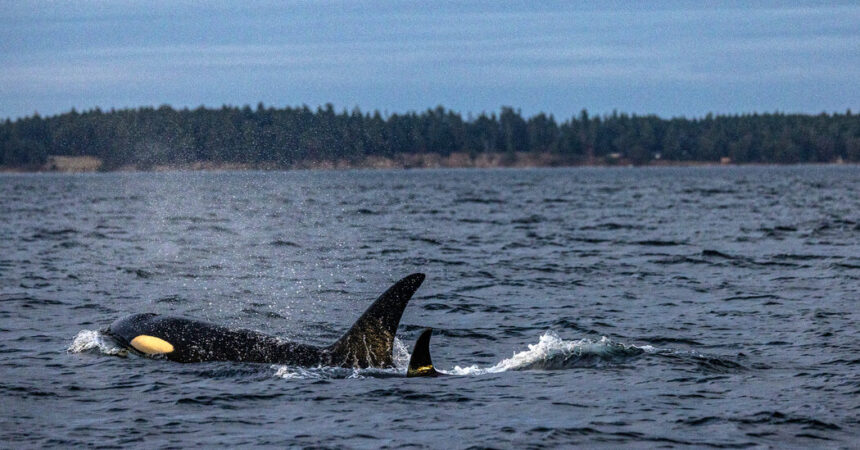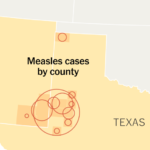Killer whales are a few of the most cosmopolitan creatures on the planet, swimming by means of each one of many world’s oceans. They patrol the frigid waters close to each poles and periodically pop up within the tropics, in places from western Africa to Hawaii.
Though their habitats and habits differ broadly, all killer whales are thought of a part of a single, world species: Orcinus orca. (Regardless of their widespread identify, killer whales are literally a part of a household of marine mammals often called oceanic dolphins.)
Now, scientists have drawn upon a long time of analysis to recommend that two killer whale populations usually noticed off the Pacific Coast of the USA and Canada are literally so totally different from one another — and from different orcas — that they need to be thought of separate species.
In a paper printed within the journal Royal Society Open Science on Tuesday, the scientists proposed giving new species designations to 2 teams of animals, one often called resident killer whales and the opposite usually known as Bigg’s killer whales. Though each sorts stay within the jap North Pacific, they’ve totally different diets: the resident orcas eat fish, with a selected predilection for salmon, whereas the Bigg’s orcas hunt marine mammals equivalent to seals and sea lions.
The proposal paperwork quite a few different behavioral, bodily and genetic variations between the 2 orca populations, which have been evolving away from one another for a whole lot of 1000’s of years, the scientists famous.
“These two sorts are genetically two of probably the most distantly associated sorts in the entire world,” mentioned Phillip Morin, a geneticist on the Southwest Fisheries Science Heart on the Nationwide Oceanic and Atmospheric Administration, or NOAA, and an creator of the research. “They’re not simply behaving in another way. They are surely on these evolutionary trajectories which we think about to be totally different species.”
There isn’t any single definition for what qualifies as a species, and the traces between animal populations are sometimes fuzzy. However these kinds of taxonomic distinctions can have implications for conservation, scientists mentioned, permitting consultants to make extra knowledgeable selections about easy methods to handle totally different orca populations.
“They very a lot do face totally different threats,” mentioned John Okay. Ford, an orca skilled and scientist emeritus at Fisheries and Oceans Canada who was not an creator of the brand new paper.
In current a long time, as an example, rebounding seal and sea lion numbers have helped gasoline a inhabitants increase for the Bigg’s orcas, he mentioned. Resident orcas, then again, have been threatened by dwindling wild salmon shares.
Dr. Ford mentioned that the authors of the brand new paper made a “very robust case,” pulling collectively a rising physique of proof that the resident killer whales and Bigg’s killer whales are distinctly totally different creatures. “It’s these a number of traces of proof all pointing in the identical course,” he mentioned.
The following step will probably be to submit the proposal to a committee of taxonomy consultants on the Society for Marine Mammalogy, which maintains “probably the most authoritative record” of species, Dr. Morin mentioned.
Lately, scientific advances have allowed scientists to conduct extra subtle analyses of the orcas’ genomes. The info means that the Bigg’s killer whales branched off from different orcas between 200,000 and 300,000 years in the past. The residents, for his or her half, diverged from different orcas about 100,000 years in the past. Genetic and behavioral analyses additionally recommend that there was little interbreeding between the Bigg’s orcas and the resident orcas in recent times.
“It’s very compelling proof to recommend that they characterize totally different species,” mentioned Kim Parsons, a geneticist at NOAA’s Northwest Fisheries Science Heart and an creator of the research.
Total, the genomes have been totally different sufficient that the scientists may predict, with excessive accuracy, whether or not a killer whale was a Bigg’s orca or a resident orca primarily based on its DNA alone.
Cranium form is equally predictive. The Bigg’s orcas have bigger, wider skulls, with extra deeply curved jaws, than the residents do — traits that may assist them wrangle their bigger prey. The Bigg’s orcas are additionally barely bigger than the residents total, with wider, extra pointed dorsal fins and totally different black-and-white patch patterns.
There are behavioral variations, too. The resident orcas stay in massive, secure teams, and are recognized to be chatty, speaking readily as they pursue fish. The Bigg’s killer whales, then again, stay in smaller teams and hunt quietly. Once they do vocalize, their whistles sound totally different from these of the residents.
The paper’s authors proposed giving the resident killer whales the brand new scientific identify Orcinus ater. If the Society for Marine Mammalogy accepts the proposal, the scientists mentioned that they deliberate to seek the advice of with Indigenous teams within the Pacific Northwest to pick a brand new widespread identify that displays the orcas’ cultural significance.
The scientists urged that the Bigg’s orcas maintain that widespread identify, which honors Michael Bigg, an influential orca researcher, however obtain the brand new scientific identify Orcinus rectipinnus.
Additional evaluation may reveal different orca populations that qualify as distinct species, the scientists mentioned.
“There’s a lot range within the oceans that we don’t find out about,” Dr. Morin mentioned. “Even with animals which can be the scale of a college bus.”








